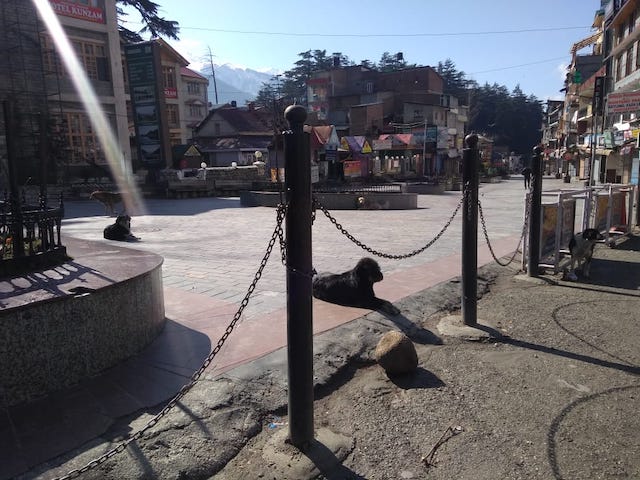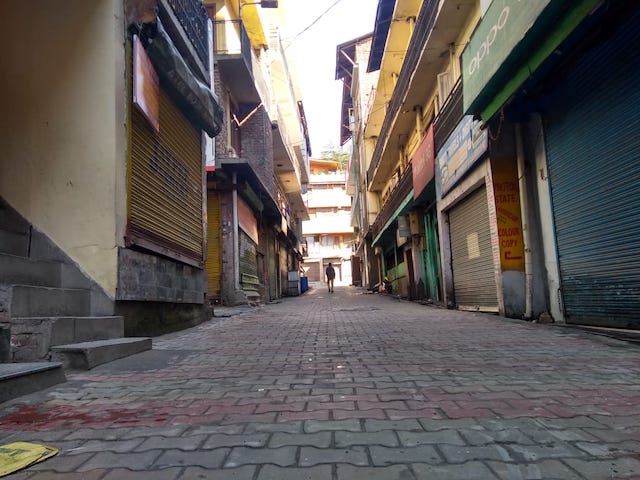Manali: Covid-19 has created not just a health emergency but a financial crisis. It could not have come at a worse time for India, already in the middle of a slowdown.
It has been a crippling week, the kind I haven’t seen all my life, says Aseem Singal, founder of the Flying Leouz Delhi . “I was in Manali, hosting guests, the weekend before Holi. And the Resort was full,” he recalls. There were some cancellations from overseas tour groups, but Indian patrons more than made up for it.
Within a week, Aseem’s bustling resort has turned into haunted outlets. Because of Covid-19 scare and government curbs, Malls are closed, streets deserted and Aseem shut down operations at his hotel.

The country is trying to contain the outbreak. Schools and universities, markets and cinemas are shut across the country. Today, everyone is staying indoor, following Prime Minister Narendra Modi’s call. It is a health emergency as well as a financial crisis and no one knows how grave this will be and how long this will last.
Even the preliminary estimates are deeply worrying. The International Labour Organization estimates that Covid-19 will destroy up to 25 million jobs. According to the United Nations Conference on Trade and Development (UNCTAD), it will likely cost the global economy between $1 trillion and $2 trillion in 2020.
It is too early to fathom Covid-19’s long-term implications, says Singal. “We are in uncharted waters. In a country where people live cheek by jowl in poverty, we can only pray and hope that the virus is contained,” he says. For now, he has to take care of some urgent concerns. One is the high fixed cost that is characteristic of the industry.
For every Rs 100 that Aseem earns, he says, roughly Rs 30 goes as staff wages, Rs 30 as establishment cost, including rentals, and another Rs 30 is the variable cost of food and beverages consumed while around Rs 10 is the profit margin.
Now his Resort is shut and no revenue is coming in and there are loans to be paid every month. He says meeting payment obligations looks like an impossible task. “There is little buffer to cushion the Covid-19 blow,” he says. “This isn’t about one or two weeks. It’s a long haul. With great sadness, I have to admit that I have no buffer to carry the load.”
Covid-19 is pushing an already shabby Indian economy into the ICU — and Aseem represent the damage the deadly disease is inflicting on businesses and workforce. The horror story is unfolding across sectors. Airlines have led the grim news. GoAir is laying off staff and asking many to go on leave without pay even as it dramatically scales down operations.
Aviation consultancy firm CAPA forecasts that many airlines will be pushed into bankruptcy.

Satish Kachroo, General Manager, Croal Group of Hotels, says: “Covid-19 is a complete unknown. It has come at a very bad time — on the back of three years of economic crunch.” It has also come at the fag end of a financial year. “The last quarter is very crucial for all businesses in India,” he says. A lot of investments and client and payment transactions typically happen in the last quarter.
There are, though, known knowns — real stories of people who are facing an unprecedented economic crisis. Sanju a resident of Manali has worked hard over the last two decades to grow his business in Manali. With 10 employees, he caters food for parties at home. Over the last 18 days, many of his orders have been cancelled. Thankfully, he says, he has no loan burden. But he is suffering a monthly business loss of Rs 1-3 lakh. “People are very afraid of the coronavirus. They don’t want to eat food from outside any more.

Ajeet Thakur, who works as a manager at a resort in Manali, says, “The corona onslaught has only begun and, already, our bosses have asked us to go on leave without pay. I don’t know what’s in store for us.”
He has to pay EMIs on home and car loans. For India, the nightmare couldn’t have come at a worse time. The economy is in the middle of a slowdown. According to experts even pre-pandemic macro numbers were worrying, with the National Statistical Office (NSO) expecting India’s GDP growth to be 5% in 2019-20, the lowest in 11 years.
“About 75% of workers are either self-employed (rickshaw pullers, carpenters and plumbers, for instance) or casual workers who are not covered under any provision or get any paid leave,” says Isha Tikku a working Woman of Manali. Even in the remaining 25%, half are regular workers and the rest informal workers. With the economy grinding to a halt, a very large segment of the workforce will be economically crushed and extremely vulnerable.

Sanjay Dutta, an engineer by qualification but is a journalist by choice.
He has worked for the premier new agency Press Trust of India and leading English daily Indian Express.
With more than a decade of experience, he has been highlighting issues related to environment, tourism and other aspects affecting mountain ecology.
Sanjay Dutta lives in a village close to Manali in Kullu valley of Himachal.



